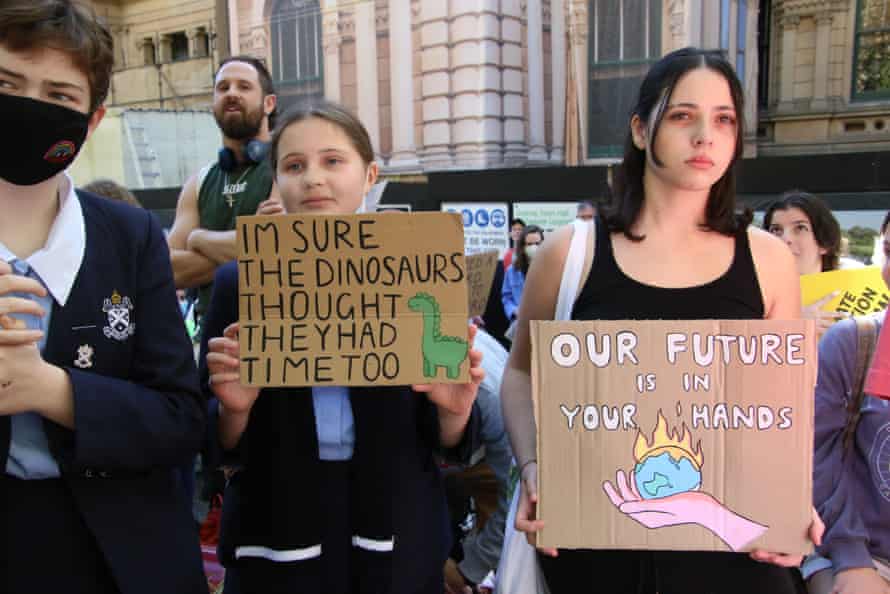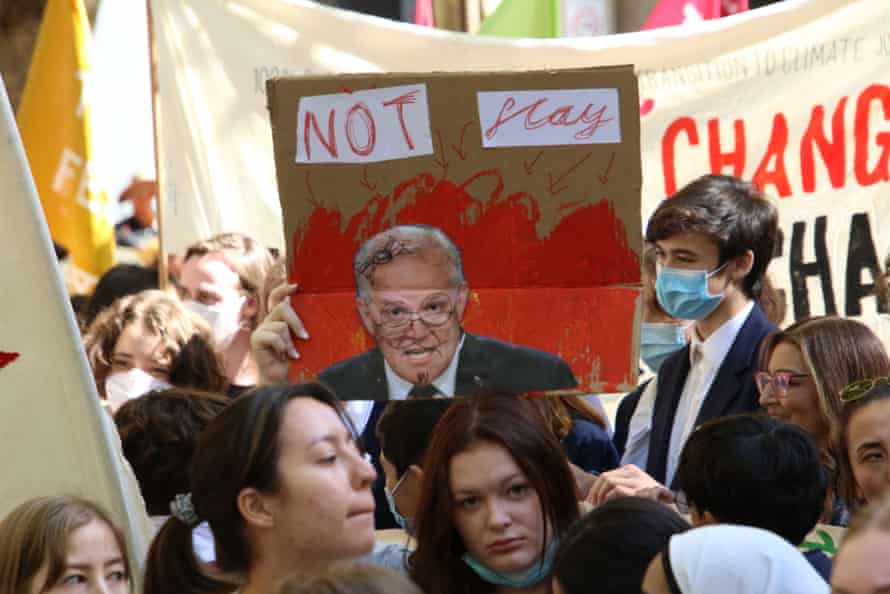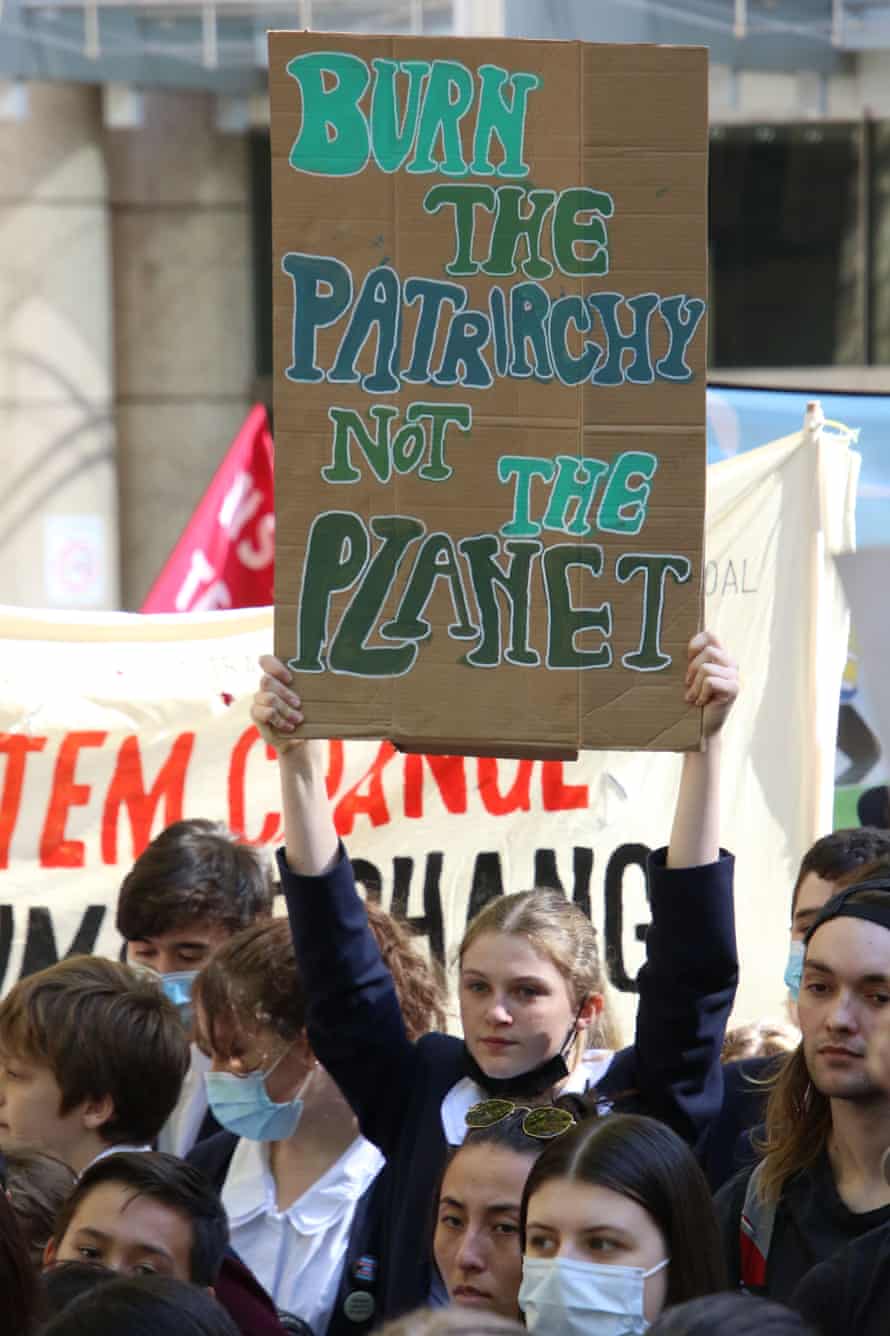
From a national standpoint, SA senate candidate Nick Xenophon has been fairly lowkey as he seeks to re-enter the parliament he left just a short few years ago.
But he had a few things to say about Facebook today:
The Government made a simple deal with Facebook and Google: if you do the right thing by Australian publishers, we won’t regulate you,” Nick said.
But Facebook hasn’t lived up to their commitments and they ought to be regulated.
The News Media and Digital Platforms Mandatory Bargaining Code became law in March 2021.
The Government agreed not to designate Facebook or Google and apply the Code to them, so long as they engaged in good faith commercial agreements with Australian news publishers.
When the Code was before Parliament, Facebook fought it tooth and nail. They even shut down government health pages during the pandemic to try and bully Australian into submission. Now they are trying to bully small publishers by using their content, and profiting off their work, without compensation. It’s just not on.”
That is about this story
Xenophon wants Facebook to be part of the mandatory bargaining code.
This is very sweet
The Electoral Commissioner receives a lot of correspondence during an #ausvotes federal election but Oliver’s letter has definitely been his favourite! ✉️
Fabulous to see the democratic enthusiasm so early. pic.twitter.com/NP0GQpWWTz
— AEC ✏️ (@AusElectoralCom) May 6, 2022
One of the reasons Scott Morrison was asked what his party could offer younger voters was because there is another climate strike protest in Sydney today.
Protesters are calling Politicians to #FundSolutionsNotPollution and are demanding an end to fossil fuel handouts and political donations as well as continuing to demand:
- Net zero by 2030, which means no new coal, oil or gas projects.
- 100% renewable energy generation and exports by 2030
- The funding of a just transition and job creation for all fossil fuel workers and their communities

Photograph: Richard Milnes/REX/Shutterstock


ACT and SA both report one Covid death
The WHO has updated its global estimate of people who have died during the pandemic from 5.5 million to 15 million. That’s 15 million people.
The ACT has reported another death in the last 24 hours as part of its Covid report.
🏥Hospital numbers
◾ In hospital: 66
◾ In ICU: 5
◾ Ventilated: 0
◾ Lives lost: 1
◾ Total lives lost since March 2020: 55
Sadly, we have been notified of the death of a woman in her 80s with COVID-19. We extend sincere condolences to her family and friends at this time. pic.twitter.com/XV58hJ193V— ACT Health (@ACTHealth) May 6, 2022
South Australia has also reported another death.
There has been better news in Tasmania.
David Pocock, Zali Steggall and now the independent candidate for Mackellar, Dr Sophie Scamps, have had ‘Greens’ logos or suggestions placed across their faces as part of a counter-campaign to their independent campaigns.
Scamps responded in a statement:
Mackellar woke up this morning to more dirty tricks from Scott Morrison’s Liberal Party. Misleading and unauthorised posters have been put up throughout our electorate in clear violation of Australian Electoral Commission (AEC) laws.
This has been distressing and upsetting to many of our campaign volunteers and supporters and is one of the reasons I am backing Zali Steggall’s Stop the Lies Bill, which would outlaw lies in political advertising.
This is the type of action that occurs when Scott Morrison refuses to set high standards. I believe this is also the result of a sustained misinformation campaign from Jason Falinski throughout this election.
It is clear this was a well-coordinated and well-resourced attack, and it is incumbent on Jason Falinski to take responsibility and condemn this type of deceitful campaign tactic.
When you don’t have a track record you can stand on or a vision for the future, this is the type of dirty tactic you have to rely on.
I have been running a positive campaign and all of our 1,100 volunteers sign and agree to a code of conduct. Instead of wasting our time dealing with illegal attacks on property, I want to focus on listening to the people of Mackellar and representing them on the issues that matter most – climate change, the establishment of a federal anti-corruption commission, improved health and mental health services and acting on cost of living pressures.
Scott Morrison said during his press conference there had been a 20% reduction in emissions and “not many people know that. It’s not something often repeated by those talking about these issues.”
This fact check goes someway to explaining why:

Daniel Hurst
Some further background on that question about armed drones.
Officials revealed in a Senate committee hearing last month that the government had quietly scrapped a $1.3bn armed drones program to partly offset the cost of a cybersecurity package dubbed Redspice (you might remember it as one of the March budget centrepieces).
Under the now-cancelled SkyGuardian program, which the Department of Defence said provided “an excellent capability system”, Australia planned to acquire up to 12 armed drones. The then defence minister, Linda Reynolds, hailed the merits of the project in 2019:
Cutting-edge technology of this kind, with advanced sensors and systems, would complement advanced aircraft such as the F-35 Joint Strike Fighter and ensure that Australian defence force maintains state-of-the-art capability.
In the budget, the government announced that the Australian Signals Directorate would double in size and ramp up its ability to launch its own offensive cyber operations as part of a $9.9bn program called Redspice. (If you’re wondering, this stands for “Resilience, Effects, Defence, Space, Intelligence, Cyber and Enablers”.)
The money will allow ASD to “keep pace with the rapid growth of cyber capabilities of potential adversaries”, the government said.
But if you look at the budget papers closely, you’ll see the Redspice funding is spread over 10 years and only $4.2bn will be spent in the first four-year budget cycle. Given the government is partly offsetting the package with savings from other parts of the defence portfolio (including, as we now know, the drones), the cyber pledge is worth only $588.7m in new money for defence in the first four years.
Vice Admiral David Johnston, the vice chief of the ADF, confirmed at Senate estimates that the axing of the project means “we do not have drones that are armed”, although he argued that type of capability “can be mostly replicated through other means”.
Until the cancellation, Johnston said, defence had been “continuing the development” of the SkyGuardian program and its “expectation” was that it would probably advance to the next stage.
But he said the scrapping was “a result of a decision to prioritise a cyber capability and we needed to determine the funding to achieve that”.
(That means it was scrapped for budget reasons, not because the project was a dud.)
Labor supports Redspice but says, if elected, it will review the Coalition’s “bewildering” decision to scrap the armed drones program “as a matter of urgency”:
Peter Hannam
Along with rising prices, the RBA in its statement on monetary policy is also forecasting that wages will grow – but much more slowly than the CPI for this year at least.
Growth in the wage price index (WPI) is forecast to pick up to around 3% by the end of 2022,” it says. “Wages growth is then forecast to strengthen further as the unemployment rate declines, to be 3.75% by mid-2024; this would be the fastest pace since 2012.”
So the bank is forecasting CPI to peak at 6%, so reaching “around” 3% implies a drop in real terms – after removing inflation – of “around” 3%. Ouch.
Since the mid-2024 CPI is expected by the bank to be 3%, that “fastest pace” in wage growth in a 12 years by then will just be clawing back some of the “pinched” wages by then.
We’ll get the March quarter WPI on 18 May, which will allow us to see how salaries fared versus the 5.1% annual CPI for that period.
What the RBA is saying, then, is that there’s a real wage increase coming – eventually. At the risk of too many comparisons, in 2021 average wages rose 2.3% vs CPI of 3.7%, so that forecast increase is a little more than half the amount real salaries shrank last year alone.
Peter Hannam
The Reserve Bank has released its quarterly statement on monetary policy, which fills out a bit of the context around this week’s surprise rise of 25 basis points that took the cash rate to 0.35%. (Farewell record low 0.1% for a while.)
A key table is this one, noting how inflation is “materially higher” than the central bank expected three months ago:
RBA in its statement on monetary policy was expecting GDP growth for 2022 of 5.5% just three months ago. That’s now been trimmed to 4.5%, and easing back to 2% by the end of 2023. CPI, of course, is sharply higher than forecast back in February (in Australia and beyond.) pic.twitter.com/djxY4wV8V6
— Peter Hannam (@p_hannam) May 6, 2022
The bank said:
Headline inflation is now expected to peak at around 6 per cent in the second half of this year, partly driven by higher petrol prices and sharp increases in the cost of new dwellings.
(Note the CPI does not track house prices, only the cost of building a new one.)
Given we were at 5.1% annually for the March quarter, that 6% might prove a bit optimistic, especially as electricity price hikes are still to come.
Anyway, the bank’s preferred “trimmed mean” inflation measure is expected to peak at about 4.75%, or well outside the 2% to 3% range the RBA aims for over the medium term. By 2024, that gauge should be back to the top of that range.
As Guardian columnist Greg Jericho has just noted, the CPI forecasts now differ notably from what Treasury estimated in the federal budget released just over a month ago:
“As the supply-side disruptions start to ease, inflation is expected to decline from these peaks,” it said. “However, with labour market conditions being the tightest they have been for a long time, growth in labour costs is expected to pick up further in the period ahead.”
The jobless rate is predicted to drop from 4% in March to 3.5% by early next year, the lowest in half a century. Bulk commodity prices are up 11% from three months ago, and 72% higher than a year earlier, which is one reason some of the GDP growth figures are higher in the near term.
Q: Perhaps minister Price might be able to answer – on the unmanned aerial drones, or vehicles, why did the government scrap the $1.3bn Sky Guardian project a couple of months ago, which would have required 10 to 12 of these UAVs, which we were told would do a great job in protecting our northern borders. Why did we scrap them?
Scott Morrison:
When we’re making decisions about future capabilities, you’ve got to weigh up the respective capabilities of what you’re seeking to invest in. And what we were able to do in the most recent budget was commit $10bn to the Red Spice Initiative, which sees us massively upgrade our cyber capabilities. And so there is always difficult choices to be made in defence.
And we make those choices based on the best possible advice out of our defence forces, out of our Department of Defence, and we consider those things carefully.
But, you know, government’s hard. You’ve got to make difficult choices all the time about capability. There are programs you choose not to go ahead with because you want to go ahead with other programs. I’ve got to say, one of the most difficult decisions I had to make over the course of this last term was to discontinue the attack class program for the French submarines. I understood that doing that would carry some pretty serious ramifications when it came to the relation – yes, both on cost and on the diplomatic issues, with a good friend and partner in France.
But you know, when you’re prime minister, you don’t get an easy day in the office. Every single day is hard.
You’ve got to make tough decisions every day.
If Anthony Albanese thinks the campaign is hard, I’ve got news for him – government’s a lot harder.
Cheers.
The press conference ends.
Q: Has the Liberal party lost its ground under your leadership?
Scott Morrison:
The Liberal party has ensured that, through the most difficult challenge that we have faced since the second world war and the Great Depression, that our policies – jobkeeper, cashflow boost, understanding the importance of small business, investing in manufacturing, investing in training, ensuring we could guarantee the essential services that Australians rely on, which comes from running a strong economy, getting taxes down – I mean, tax rates for small business has gone from 20% to 35%. We’re ensuring now that, if you’re earning $90,000 a year, that you’re paying 50 bucks a week less on tax than you would have if Labor party’s taxes still were in place.
That’s what the Liberal party’s always been about. Getting taxes down, ensuring that we’re delivering on a strong economy, guaranteeing the essential services that Australians rely on. That’s what the Liberal party have always stood for. And that is the strong economy they can vote for.
Now, if they want to consider an alternative that leads to chaos in the parliament, then that will only lead to their interests, their families, their jobs, their economy, being under threat. Last one.
Scott Morrison won’t say if he will resign in case of a hung parliament
Scott Morrison gets a little cranky on this one.
Q: I think all of Australia deserves to know, will you resign as leader in the case of a hung parliament? You say it’s a cavalcade of chaos, so will you resign?
Scott Morrison:
This is choice for the Australian people.
Q: That’s not a yes-or-no answer.
Morrison:
You get to ask the questions, not say what the answer is. My answer to that is – my answer lies in the lap of the Australian people. See, I’m the first prime minister …
Q: That sounds like you would resign.
Morrison:
Again, I’ll answer the question. I’m very happy to answer the question. And I’ll take you through what it is.
I’m the first prime minister that has been able to stand for election at the last election and then stand for an election again. [I assume he means since John Howard.]
So I’m going to the Australian people at this election, and that’s the first time that has happened in about 15 years. And that has provided great stability and certainty, I believe. And that was one of the things I said I would bring back to politics when I became prime minister.
That I would provide that certainty and stability of leadership, which I have delivered from last election through to this election. And I’m putting myself forward to be able to continue to provide that strong leadership. So the decision – the decision for the Australian people – is up to them. And I put my trust in their good conscience and their good faith. That is my answer.
Q: Do you believe both you and the coalition will have the support of young voters this election?
Scott Morrison:
For young voters in particular, I know there are many things that play on their minds at this election. Of course, issues of climate change are of great interest. They’re of interest – my kids are not of voting age yet, but they talk about these issues as well.
That’s why, as a government, we’ve had a very practical approach to addressing that issue. I mean, we’ve already seen Australia receive around a 20% reduction in emissions.
Not many people know that. It’s not something often repeated by those talking about these issues – Australia’s emission reduction performance is better than the United States, many times over what’s been achieved in New Zealand and Canada, better than Japan, and we are investing $22 billion to take us to our meeting, our net zero by 2050 commitments, which is something that, as Prime Minister, bringing together the Liberals and the Nationals for the first time to be able to make that commitment to go to Glasgow and be able to put that on the table as a clear government policy and a plan of $22 billion to achieve it.
Because our way of reaching net zero by 2050 is, first of all, to do it through technology, not taxes. Secondly, to ensure that we are giving people choices – and good choices, not mandates.
It’s about ensuring that we’re investing in getting the costs of technology down. Now, this is incredibly important. Because if you can’t get the costs of technology that drives lower emissions usage in Australia around the world, you won’t see emissions fall in Indonesia. You won’t see it in India. You won’t see it in Vietnam or China or many of these other countries.
So, developed countries can access this technology, but developing countries – whose emissions are rising – won’t be able to. And that’s a great opportunity for Australia. Fourthly, you need to ensure that you’ve got affordable, reliable energy. That’s important for companies like this. You need to ensure that you can – there’s five points to the plan. I’m keen to go through all five.
On the fourth point, it’s about ensuring that we keep that reliable, affordable energy. That’s why we’ve leaned in to the gas-fired power station, which Anthony Albanese was against, and then he was for, and then he was against, and then he’s for. And then fifthly, it’s assuring accountability and transparency.
Australia has one of the most transparent and open systems of reporting our emissions reductions of almost any country in the world. So that’s our plan. You’ve asked me about young people. 220,000 apprentices in trade training today. That is the highest level we have seen since 1963.
We’re giving young people the opportunity for a great job. I mean, youth unemployment is down to 8.3%. Young Australians are coming out of training, out of school, out of university, and going into jobs. That wasn’t the case when I left university. It wasn’t the case when my generation left training.
They walked into joblessness and they walked into the question about “if” they would have a job, not what sort of job. And for young people today – for young people today, because of the strong economic management we’ve provided, they can look forward to their future with confidence. Because we’re getting the youth unemployment rate down.
[There are a lot of interjections from reporters].


